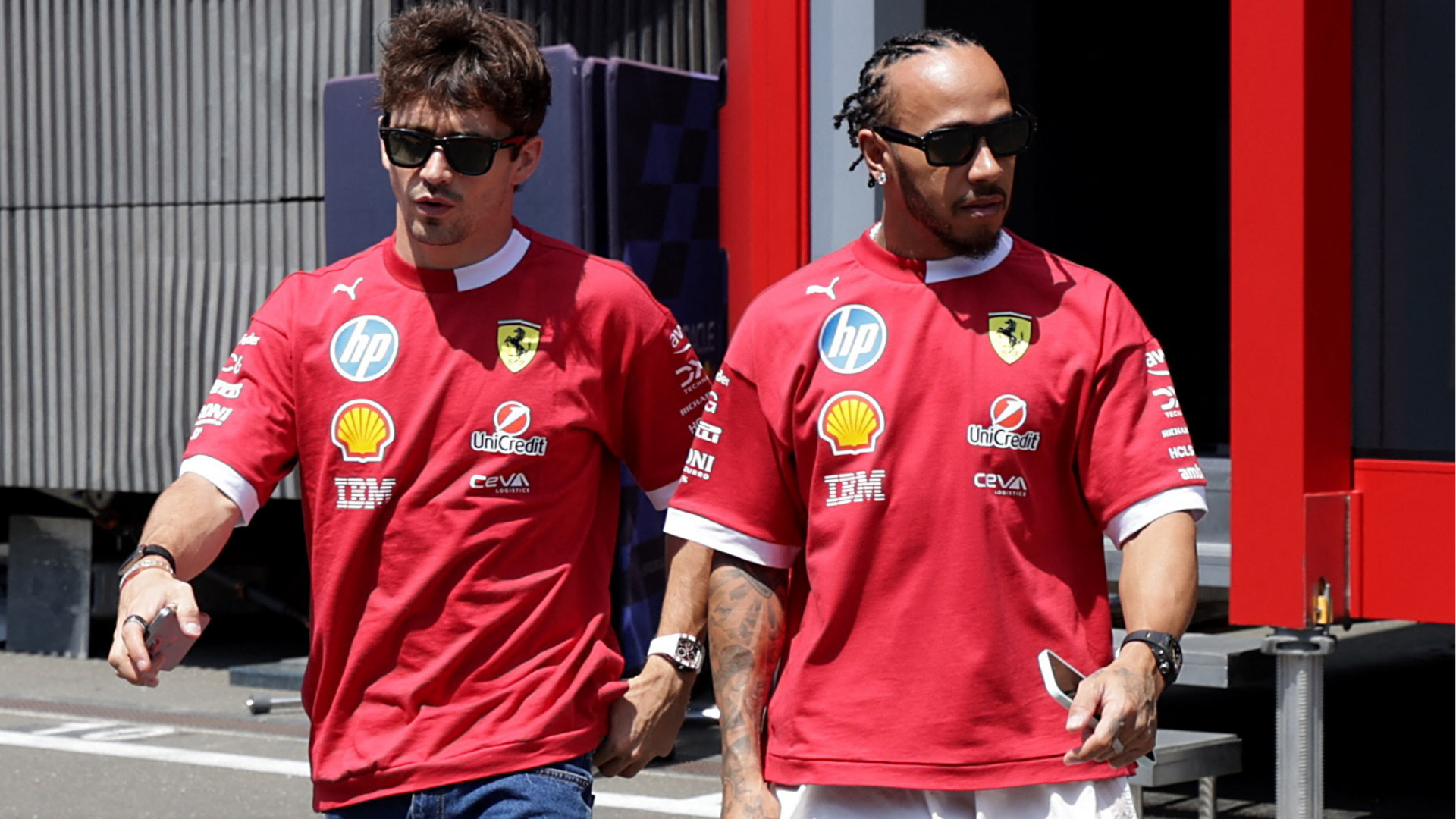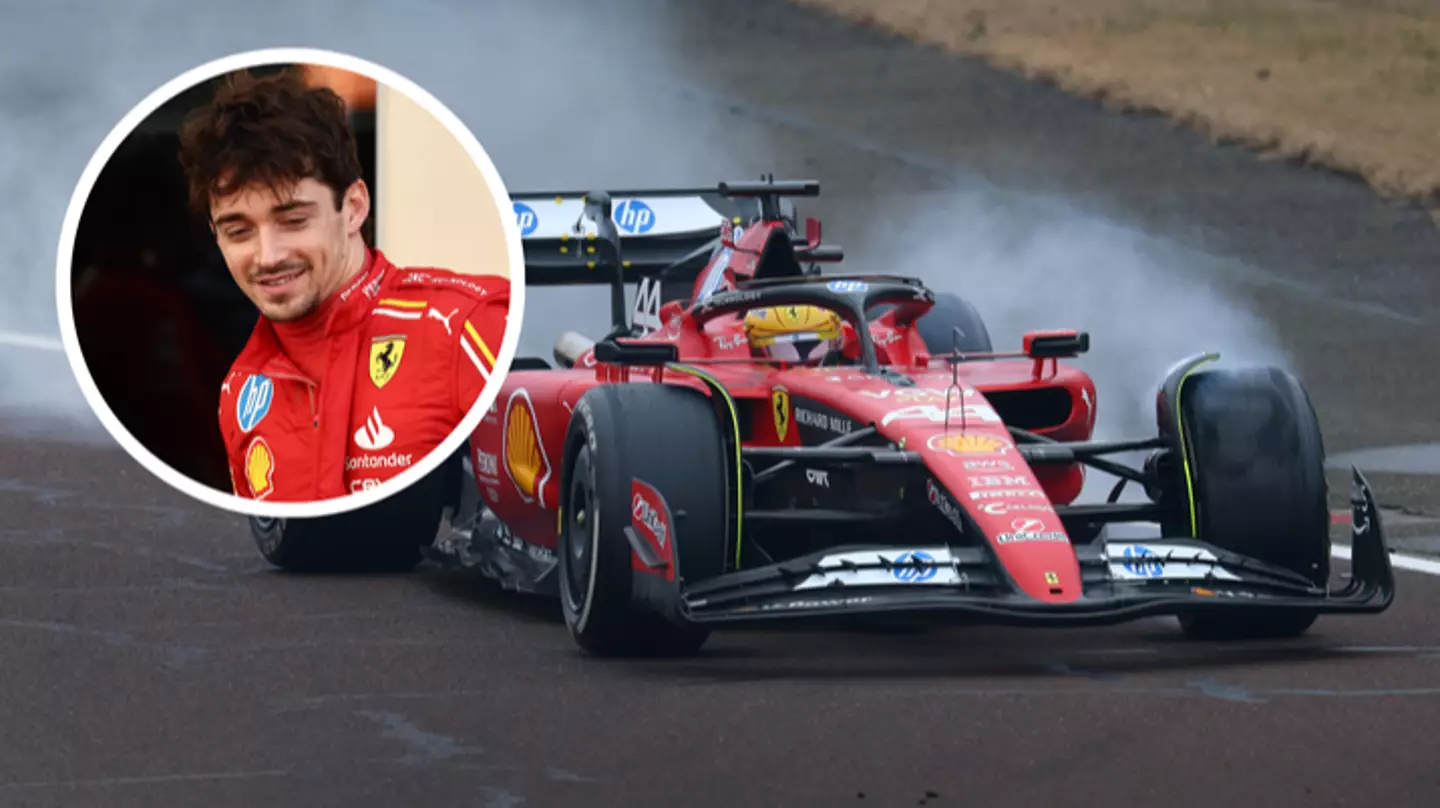In the high-stakes, high-pressure theater of Formula 1, there is a special kind of silence that falls when a giant stumbles. It’s not just the absence of celebration; it’s the vacuum left by collapsed expectations.
For Scuderia Ferrari, the United States Grand Prix Sprint Qualifying was not just a stumble; it was a public trial, an unravelling broadcast in high definition. And as the dust settled in Austin, the measured, devastating words of its two-star drivers, Lewis Hamilton and Charles Leclerc, did not just report on a disaster. They pronounced a sentence.
This was not the script anyone at Marinello had written. This was supposed to be the season where the Prancing Horse, armed with a seven-time World Champion and its cherished homegrown talent, took the fight to its rivals.
Instead, the Circuit of the Americas served as a brutal turning point, a moment that may well define the narrative of this entire campaign. The problem wasn’t just that they were slow. It was the chasm that separated them from the front.

In modern Formula 1, races are won by thousandths. Gaps are measured in tenths. At Austin, the Ferraris were hemorrhaging time, finishing almost nine-tenths of a second off the pace of Max Verstappen’s Red Bull. In this sport, that isn’t a gap; it’s an eternity. It is a fundamental, glaring difference in design philosophy. But the humiliation did not end there. In a twist of brutal irony, Ferrari, the mighty constructor, was resoundingly beaten by its own customer team, Sauber. Nico Hulkenberg, in a car with a fraction of the budget and resources, planted his Sauber in a scarcely believable fourth position.
This wasn’t a fluke. It wasn’t a lucky lap or a slipstream anomaly. It was a legitimate result that sent a “tsunami of discomfort” ripping through the Ferrari paddock. The image was devastating: the customer car, with a more coherent setup, had outperformed the factory team. What should have been a weekend of redemption had morphed into a public indictment of the SF25. The blow was not just technical; it was profoundly psychological.
In the aftermath, the cameras found Lewis Hamilton. A man who has seen everything in this sport, a champion defined by his resilience, looked visibly affected. There were long silences, a furrowed brow, and a posture of pure helplessness. His words, when they came, were not spoken with the fire of anger, but with the cold, hard weight of resignation.
“That was definitely not the pace we’re expecting,” he began, almost mechanically. Then came the line that echoed like a gunshot. “Eight-tenths is a mountain to climb.” This wasn’t a complaint. It was a diagnosis. In a sport of incremental gains, eight-tenths is an insurmountable peak, not a hill to be chipped away at.
Hamilton, with his decades of experience, knew this was not a simple setup error. He described a car that was “very, very tough to drive,” a machine that had been “looking pretty decent” in practice and the first qualifying session, only for the performance to suddenly “fall away.” This pattern, this inconsistency, is a driver’s worst nightmare. It’s a symptom of a car with a “narrow operating window”—a machine so fickle that the slightest change in temperature, wind, or humidity causes its performance to collapse.

When a driver of Hamilton’s caliber cannot predict or control his car’s behavior, the problem is no longer on the track. It is embedded in the car’s very architecture. He wasn’t just frustrated; he sounded hopeless. “I’ll be very surprised if we found something that will make us such a jump,” he admitted. This was a champion waving a white flag, not on the race, but perhaps on the entire project.
If Hamilton’s verdict was a sentence, Charles Leclerc’s was a tragic confirmation. His weekend was already compromised by a mechanical failure in the gearbox during the single practice session, leaving him to enter the high-pressure qualifying session effectively blind. He was a concert pianist asked to perform a symphony without ever tuning his instrument.
And yet, he drove. In the final session, he recorded a clean lap. No mistakes, no track limits, no excuses. The result? A devastating 10th place. When the media questioned him, his response was as sober as it was heartbreaking. “We are wasting time everywhere.”
There was no blame, no finger-pointing. Just the lucid, painful acceptance of a man who had given his best and found it was nowhere near enough. This is the definition of “technical impotence.” The most alarming part of Leclerc’s statement was his perception of having driven a good lap, only to be met with no reward. This disconnection between a driver’s effort and the car’s result is what shatters confidence. It undermines the very foundation of a driver’s relationship with his team.
For Leclerc, who has a history of strategic failures, mechanical problems, and pit-stop errors, this was a new, more profound level of hopelessness. This time, there were no procedural errors to blame. There was just an inherently, structurally inferior car. The problem, as the analysis confirmed, is “systemic.” It lies at the “very root of the car”—an inconsistent aerodynamic platform, poor integration, and a design that simply does not work.
This is the catastrophic scenario. This isn’t an isolated stumble; it is part of a “pattern of inconsistency, frustration, and broken promises” that has defined Ferrari’s season. The Austin GP was simply the moment the internal frustration boiled over into the public domain. Talk of an “implosion within Marinelo” suddenly feels less like hyperbole and more like an active diagnosis.
The real threat to Ferrari now is not just a lost season. The real threat is that their two generational talents, the drivers they’ve staked their future on, “no longer seem convinced that the situation can be reversed.” This is a crisis of faith.

In Formula 1, you can fix an aerodynamic flaw. You can build a new engine. But you cannot easily rebuild a driver’s trust. Once that credibility is lost, no upgrade package can restore it. Leclerc, the man who dreamed of winning in red, is beginning to sound like someone who has “stopped believing that those solutions exist.” How much longer will he be willing to have his talent buried by a car that doesn’t accompany him? How long will Hamilton, in the twilight of his legendary career, tolerate being a non-factor?
The rarified air in Marinello is now thick with tension, leaks, and rumors of technical shuffles and drivers looking for exits. When the focus shifts from performance to damage control, the decline only accelerates.
Ferrari left Austin not just slow, but vulnerable. It exposed its fragility to the world. The challenge ahead is no longer about a single race; it is about demonstrating that the most storied team in a generation still has the ability to “learn, correct, and reinvent itself.” They must do it before their own illustrious history “turns him into a dead weight impossible to lift.” Because, as their own drivers made painfully clear, time has already run out.